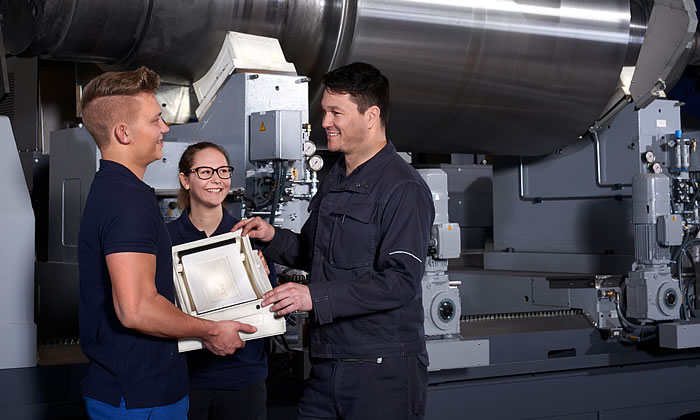100 hydrostatic steady rest pads from the 3D printer
Additive manufacturing reduces delivery time
Until recently, customers had to allow for eight to twelve weeks of delivery time for new steady rest pads. In addition, they had to be elaborately changed with the help of a crane. This took around 30 to 45 minutes per set with four pads – a tedious process. In contrast, at Herkules, a 3D printer produces steady rest pads made of plastic that are delivered within three weeks and can be changed up to 70% faster without a crane.
100 pads for hydrostatic steady rests have been manufactured since February 2016. Based on 3D drawings, the 3D printer of the type EOSINT P 760 manufactures high-quality steady rest pads by powder bed fusion method with the help of two high-performance lasers. They are as durable as metal pads.
“It is not just the steady rest pads we produce here with the 3D printer,” says Head of Production Thomas Meyer. “We also manufacture many other components, some of which are very complex and difficult to produce using conventional methods. I see a lot of potential here.“


